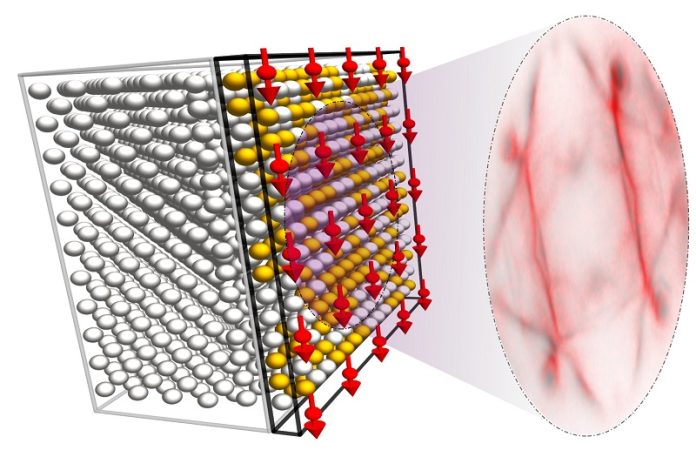
Scientists in Germany have made a major breakthrough that could change the future of electronics.
A research team at Forschungszentrum Jülich has successfully created the world’s first two-dimensional half metal—a material that allows electricity to flow using only one type of electron spin.
This achievement, recently published in Physical Review Letters, brings the world one step closer to building faster, smaller, and more energy-efficient electronic devices using a new field called spintronics.
In regular electronics, we use the charge of electrons to power devices and store data. But electrons also have a property called “spin,” which can be thought of as pointing either up or down.
Spintronics takes advantage of both charge and spin, offering the potential to store and process data much more efficiently.
Half metals are special because they only let electrons with one spin direction—either “spin-up” or “spin-down”—move through. Until now, all known half metals worked only at extremely low temperatures and lost their properties near the surface, which made them impractical for real-world use.
The new material developed by the Jülich team solves these problems.
The researchers built their half metal using an ultrathin layer of iron and palladium, only two atoms thick, on a palladium crystal base. They used a cutting-edge imaging technique called spin-resolved momentum microscopy to prove that this material only allows one spin type to conduct electricity.
That’s the key feature of a true half metal.
What makes this material especially exciting is that it doesn’t need to be perfectly structured to work. Its properties can be tuned by changing the amount of iron, which makes it much easier to produce. It also works at room temperature, a big step forward for practical applications.
Interestingly, the study also challenges a long-held belief in physics. Scientists used to think that an effect called spin–orbit coupling, which links an electron’s spin with its motion, would stop half-metal behavior.
But the Jülich team showed that when properly balanced with magnetic forces from the iron atoms, spin–orbit coupling actually helps enable the effect.
This new material could be used in future technologies like spin filters and advanced memory chips that use less power and process data more quickly. It also displays a rare and puzzling behavior: the direction of its spin is opposite to its magnetic field, which could lead to new possibilities in tiny magnetic devices.



